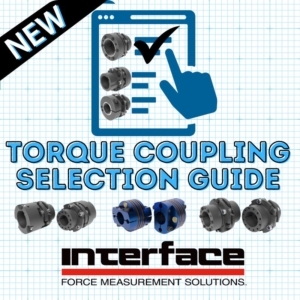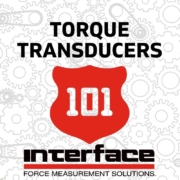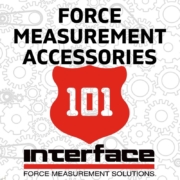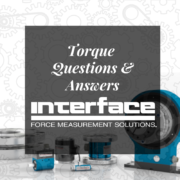Interface Introduces New Torque Coupling Guide
 The new Interface Torque Coupling Selection Guide is a valuable tool for determining the correct couplings for your specific transducer and application.
The new Interface Torque Coupling Selection Guide is a valuable tool for determining the correct couplings for your specific transducer and application.
This resourceful guide considers the type of torque sensor you are using, the hub type, the paired sides for connection that is best suited for your test and measurement use case.
Our couplings are durable and made to sustain performance throughout the lifetime of the matching torque transducer’s high accuracy test and measurement conditions. Learn more in our Couplings 101 post.
Interface’s Torque Coupling Selection Guide will help you narrow down your choices and find the coupling that matches your application requirements. Interface Torque Transducer shafts are compatible with either a shrink disk or collar type hub. You have the option to choose from a shrink disk, keyed, keyed large, clamping ring, or a collar hub based on your shaft’s connection requirements. We do offer keyed shaft options for our torque transducers, by request through our custom solutions group.
The types of couplings Interface offers include:
- Single Flex Floating Mount
- Double Flex Pedestal Mount
These are offered with the following hub configurations:
- Shrink Disk – Keyed
- Shrink Disk – Keyed Large
- Shrink Disk – Shrink Disk
- Shrink Disk – Clamping Ring
- Collar – Collar
Torque transducers require couplings to ensure accuracy and protect your sensor investment. A torque transducer coupling is a specialized coupling that is designed to connect a torque transducer to a rotating shaft and facilitate torque measurement. This ensures that the transducer can measure the torque accurately and reliably, without any damage to the transducer or the shaft. Read more in our post: Torque Transducers and Couplings are the Perfect Pairing.
Additional factors to consider when choosing a coupling:
- Torque transducer model: Not all couplings are equal. Interface always recommends that the couplings are designed for the specific model to eliminate any concerns with performance and reliability. Go to our torque guide to review available models.
- Torque range: The coupling must be able to handle the maximum torque that will be applied to it.
- Speed: The coupling must be able to operate at the desired speed without overheating or causing vibration.
- Environment: The coupling must be able to withstand the environmental conditions in which it will be used, such as temperature, humidity, and corrosive chemicals.
- Space constraints: The coupling must be able to fit in the available space.
- Quality: Interface provides couplings that are made for our specific torque transducers, ensuring they are engineered to the exact specifications of the paired sensor.
When selecting an Interface torque transducer, always request or include the Interface couplings that are designed for that specific transducer model. It is especially important to review the coupling’s features and make sure they are compatible with your transducer. The coupling and transducer are designed to work together, and using the wrong coupling could lead to problems or even damage the transducer.
Without a coupling, the torque transducer cannot be mechanically connected to the rotating shaft or component. As a result, it will not be able to measure the torque being transmitted through the shaft and you lose the ability to correctly monitor and analyze torque.
We always recommend that you connect with Interface’s application engineers if you have questions. Based on experience, they can help you assess your needs and make sure you choose the right coupling accessories.
Interface provides a series of guides to help in selecting the sensor, instrumentation and supporting accessories. You can find all the online guides here, including the most popular guides:
- Load Cell Selection Guide
- Torque Transducer Selection Guide
- Instrumentation Selection Guide
- Mini Load Cell Selection Guide







